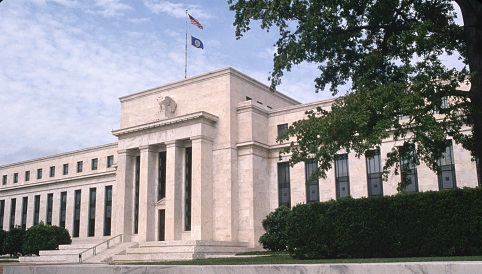Given that today is US Labour Day, US markets are closed today and as a result, global financial markets are set to be subdued until the start of the Tuesday Asia Pacific session. The data calendar has been pretty much empty today, aside from German July Industrial Order numbers and the Eurozone Sentix Investor Confidence survey, both of which were released this morning. The former was a little better than expected and the latter was in line with expectations. Thus, without much by way of fresh fundamentals today for global financial markets to focus on, traders and investors may instead continue to digest as Friday’s mixed US labour market report; as a recap, the headline NFP number came in well below expectations at 253K versus forecasts for around 750K jobs to have been added in the month of August. Thus, many market participants have pushed back their expectations for the Fed’s QE tapering timeline and some are arguing that the alleged “dovish” implications from the latest labour market report are acting to support US equities (S&P 500 futures are this morning trading just under record highs in the 4540s).
This argument doesn’t quite hold water, however, given that the US dollar is broadly now at stronger levels that it was prior to the US labour market data (the DXY is back near 92.30 having briefly been under 92.00 last Friday) and US real and nominal bond yields ended Friday’s session at modestly higher levels; 10-year nominal yields are at 1.32% having been under 1.30% prior to the jobs report. If the latest jobs report is going to result in more dovish FOMC QE tapering guidance, you would likely see the dollar and US yields lower, not modestly higher. Perhaps this is a reflection of the fact that other aspects of the recent released jobs report indicated strength; the unemployment rate fell as expected to 5.2% from 5.4% in July and Average Hourly Earnings saw a much sharper than expected rise on the month 0.6% versus forecasts for a 0.3% rise in wages. Meanwhile, the July NFP number got a big 110K upwards revision, meaning the average number of jobs added over the last three months as of August remains at very healthy levels (the Fed prefers these “smoothed” measures of job gains compared to paying too much attention to comparatively more “bumpy” individual jobs reports).
Given the holiday stateside, US bonds don’t trade today, and we will only have equity futures markets to watch to gauge sentiment there. FOMC speakers will be on the wires later in the week and any reaction to the latest jobs report and what it means for the Fed’s decision on the QE tapering timeline would be of note. But global macro sentiment is likely for once not to be driven predominantly by US events this week, given a litany of global central bank events. The RBA decide on policy during Tuesday’s Asia Pacific session, the BoC are up next on Wednesday, whilst the main event of the week will be the ECB’s confab on Thursday. Big data releases like July UK GDP numbers and the August Canadian labour market report (both out on Friday), as well as Chinese Trade and inflation numbers and a few EM central banks (Russia and Poland) may all steal some of the limelight.
In terms of how the week has gone so far; sentiment in Asia equity markets overnight was decent, with Japanese stocks continuing their recent run higher (Nikkei +1.8%) amid ongoing hopes for more fiscal stimulus from the countries next PM (to recap, current PM Suga announced he would not stand for re-election). Meanwhile, Chinese stocks (Shanghai Comp +1.1%) are also hoping for more stimulus amid positive rhetoric from Chinese Vice Premier Lui He about how the government will continue to support the private sector and amid more speculation from Chinese economists that another RRR cut is on the way. MSCI’s main index of Asia equities (excluding Japan) hit six-week highs last night. Sentiment in Europe is similarly upbeat, with the Stoxx 600 up about 0.6% on the session and just under record levels. Unlike their US and Chinese counterparts, European equities are not yet having to contend with a downturn in the macro data. If anything, Eurozone data as of late has been better than expected. Though this might prompt the ECB to announce a reduction to the pace of its monthly bond buying under its PEPP remit ahead of the scheduled end to the programme in March, European equities are still looking at the growth/monetary policy combination in the Eurozone as something of a goldilocks situation – after all, a strong recovery is expected to continue, while the ECB’s recently tweaked inflation target enshrines expectations that even if the bank does start to wind down QE over the next 6 month to 1 year, it will not be lifting interest rates for a very long time.
A quick look at commodity markets; crude oil prices are a tad weaker despite the broadly positive tone in equity markets, with WTI back under $69.00 and down about half a percent. Analysts say that the news that Saudi Aramco had cut the official selling price for its customers in October by more than expected could signal softer demand and higher supply and is thus weighing on prices. Others are citing the recent downturn in US and Chinese growth indicators, as shown by the latest downturn in August survey data, as a negative for prices. This week another key theme for crude traders will be watching the news out of the Gulf of Mexico regarding the pace of recovery in oil output and refinery activity there, after Hurricane Ida knocked about 1.7M barrels per day in production offline. Elsewhere, there has been some attention on a sharp drop in iron ore prices, with the main Chinese benchmark dropping 6% to its lowest in seven months following an increase in portside stocks due to increased supply and weaker recent domestic demand. By contrast, Aluminium prices at decade highs after reports of political turmoil in Guinea (the biggest supplier of bauxite – the ore used to produce aluminium) triggered concerns over raw material shortages. Finally, as the US dollar continues to recover from last Friday’s post NFP lows (the DXY is up about 0.25% this morning), gold has come under very slight pressure and has failed to break above key resistance in the $1830 area.
Aside from the continued modest recovery in the US dollar from recent lows, FX markets are subdued this morning. NZDUSD and GBPUSD are both flat around 1.3850 and 0.7150 respectively. EUR, AUD, JPY, CAD and CHF are all between 0.1-0.2% lower on the day versus the buck, with EURUSD dropping back from last Friday’s highs above 1.1900 towards 1.1850, AUDUSD slipping back under 0.7350, USDCAD moving back towards 1.2550 and USDJPY and USDCHF both still contained with recent ranges just under 110.00 and around 0.9150 respectively.




